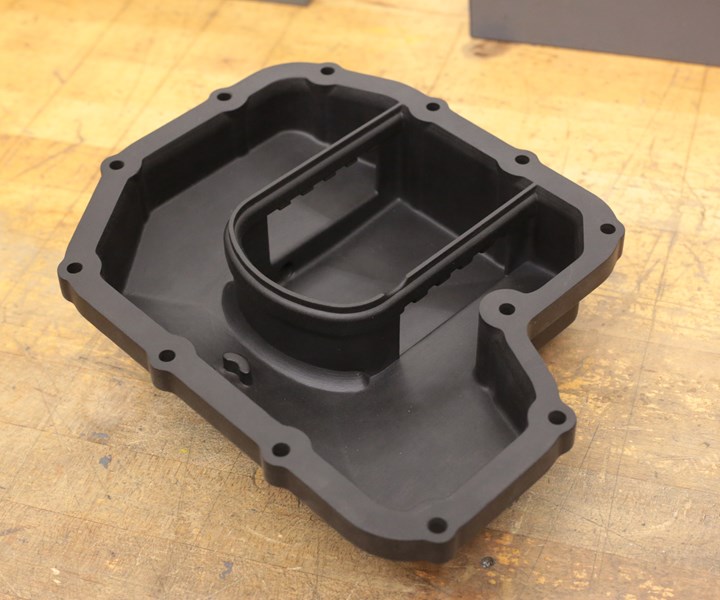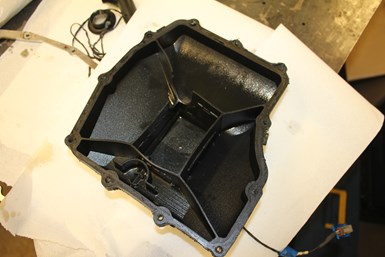3D printing, composite materials enable motorsports design flexibility
A collegiate Formula SAE racing team used Windform carbon fiber-filled composite materials and laser sintering technology to streamline part design.

This 3D-printed composite oil pan was built using Windform SP material for the University of Victoria’s 2019 SAE racecar. Source | CRP Technology
A combination of 3D printing technology and composite materials has enabled one university motorsports team the opportunity to design — and redesign — parts for its Formula SAE collegiate racecars for the past four years.
Since 2016, the University of Victoria Formula Motorsport team (UVic; Victoria, British Columbia, Canada) has been designing its Formula SAE racing vehicles with 3D-printed oil pans engineered with CRP USA’s (part of CRP Group, Modena, Italy) laser sintering 3D printing process and Windform TOP-LINE composite materials.
From 2016-2018, the oil pans were produced using CRP’s polyamide-based Windform XT 2.0 carbon fiber-filled composite material. According to CRP, the light weight of these pans allowed the team to significantly lower the vehicle’s engine, decreasing the vehicle’s overall center of gravity and improving the performance of the car.
In addition, the use of laser sintering technology has given the team freedom to design complex geometries, such as oil pan baffles to more consistently direct oil flow within the pan and eliminate the possibility of oil starvation when the vehicle tilts around corners.

The 2017-2018 version of UVic Motorsport Team’s 3D-printed oil pan, using Windform XT 2.0. Source | CRP Technology
In 2018, though, the team’s vehicle engine overheated during a test drive, causing the oil temperature to increase beyond the limits of the designed pan, warping the thin walls of the oil pan baffle and pulling a section of the mating flange into the pan, causing a significant oil leak.
For the 2019 competition, the team re-evaluated the design, choosing to make some changes to the pan’s geometry and evaluating alternative Windform TOP-LINE materials. The redesigned oil pan comprises Windform SP, a carbon fiber-filled polyamide composite material with a higher melting point compared to Windform XT 2.0. To decrease chances of failure, the team also increased the thickness of the mating flange and changed the design for the baffle, simplifying the baffle walls to one central area around the oil pickup and adding a support ridge to the top of the wall.
The changes, CRP Technology says, resulted in a more robust oil pan.
According to the UVic Motorsport team, “With laser sintering technology and Windform TOP-LINE composite materials from CRP USA at the finger tips of our engineering team, we are able to design complex parts that previously would not have been possible.”
Related Content
-
Plant tour: Joby Aviation, Marina, Calif., U.S.
As the advanced air mobility market begins to take shape, market leader Joby Aviation works to industrialize composites manufacturing for its first-generation, composites-intensive, all-electric air taxi.
-
Sulapac introduces Sulapac Flow 1.7 to replace PLA, ABS and PP in FDM, FGF
Available as filament and granules for extrusion, new wood composite matches properties yet is compostable, eliminates microplastics and reduces carbon footprint.
-
Price, performance, protection: EV battery enclosures, Part 1
Composite technologies are growing in use as suppliers continue efforts to meet more demanding requirements for EV battery enclosures.

.jpg;width=70;height=70;mode=crop)














